Have you ever encountered a cockroach closely and ended up with nasty stains on your clothes? It’s a common problem, but what’s the best way to remove those stains? How to remove cockroach stains from clothes ?
Quick Tips
- Identify the type of stain and prepare the garment for treatment.
- Use home remedies such as baking soda, vinegar, or lemon juice for stain removal.
- Employ commercial stain removal products if necessary.
- Follow specific washing and rinsing techniques, considering water temperature.
- Use a washing machine effectively for thorough cleaning.
- Implement preventive measures to protect clothes from future cockroach stains.
If you’re dealing with this icky problem and looking for more detailed tips, keep reading. We have some handy advice on tackling those stubborn roach stains to make your clothes look as good as new.
Cockroach Stains on Clothes
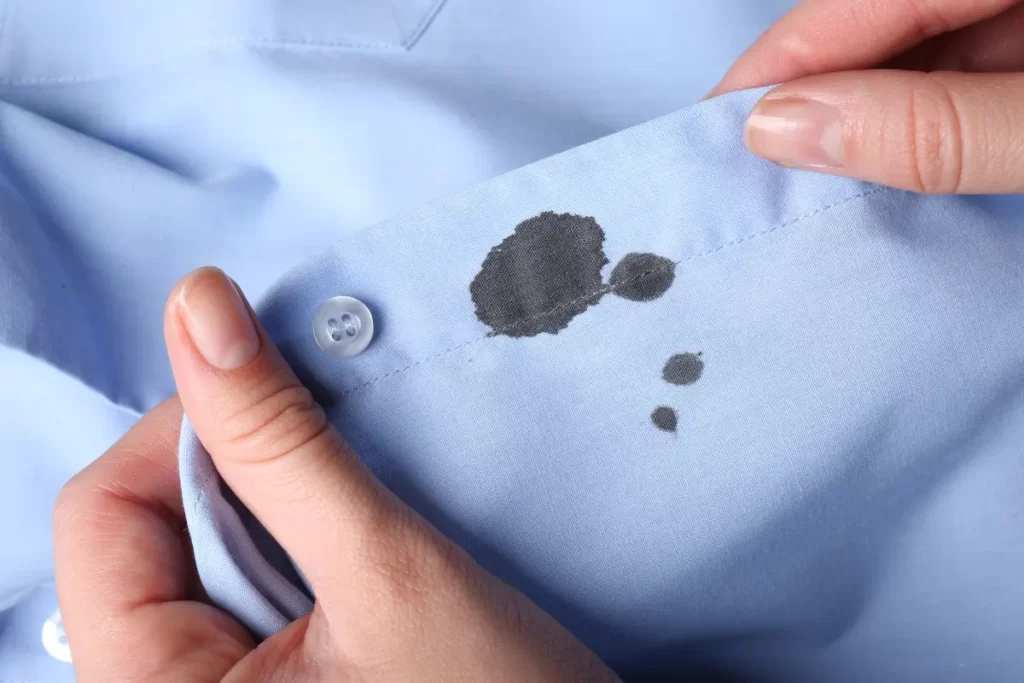
Finding a cockroach stain on your favorite shirt or pants is like a nightmare. These stains are usually brownish or yellowish and can be pretty gross. They happen when a cockroach gets squished against your clothes or leaves its mark as it scurries. The stains are not just ugly; they can be a bit smelly, too.
The real trouble with cockroach stains is that they’re not just dirt. They’re a mix of the roach’s body oils and whatever it’s been walking through, which could be anything from food to garbage. Yuck, right? This means they can be a bit tricky to clean. But don’t worry. You can get your clothes looking and smelling fresh with the right steps.
It’s important to tackle these stains quickly. The longer they sit, the harder they are to remove. So, when you spot a roach stain, it’s time to get cleaned. You don’t want those creepy-crawly reminders hanging around on your clothes.
Quick and Effective Stain Removal
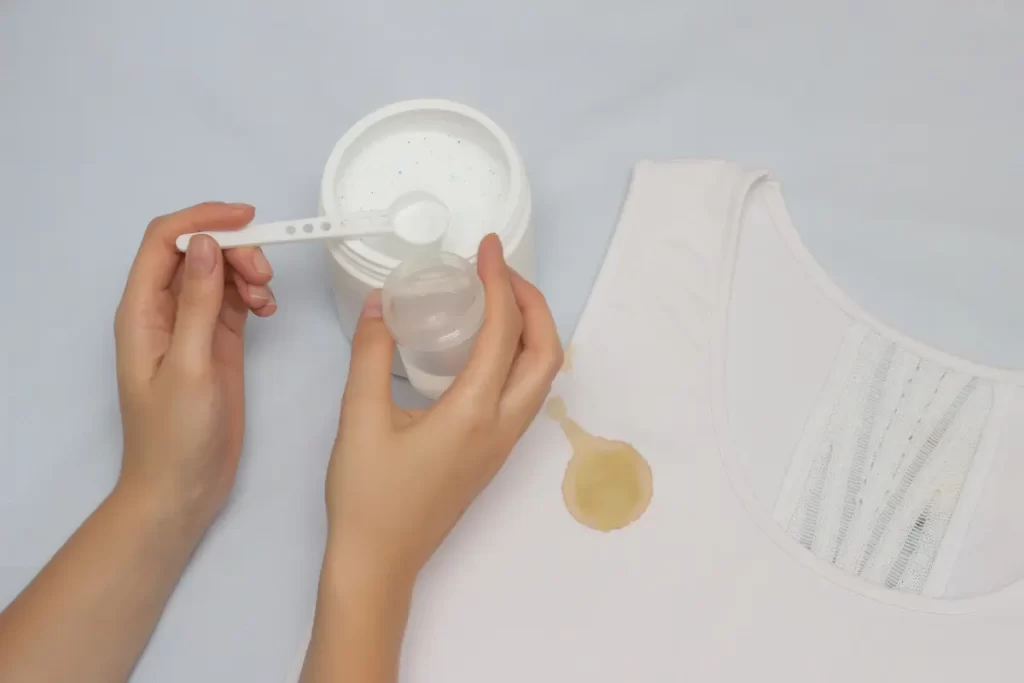
Here’s how you can get rid of those icky cockroach stains on your clothes:
Scrape-Off Solids: If there’s anything solid on the stain, gently scrape it off with a spoon or a dull knife.
Blot the Stain: Use a clean cloth to blot any oily residue. Be careful not to rub, as this can spread the stain.
Pre-Treat the Stain: Apply a stain remover or a bit of liquid laundry detergent directly onto the stain. Let it sit for about 5-10 minutes.
Wash in Hot Water: Check the clothing label first. If it’s safe, wash the garment in the hottest water recommended for the fabric.
Check Before Drying: Make sure the stain is gone before you put the clothes in the dryer. Heat can set the stain, making it almost impossible to remove.
Repeat if Needed: If the stain remains, treat and wash it again.
Remember, quick action is your best friend when dealing with cockroach stains. With these steps, you can say goodbye to those gross marks and keep your clothes looking clean and fresh.
Pre-Treatment Steps for Stain Removal
Before you dive into cleaning that nasty stain, there are a few pre-treatment steps you should follow. These steps are like the warm-up exercises you do before playing sports – they prepare everything for the main action.
Act Fast: The sooner you deal with a stain, the better your chances of getting it out. Like a superhero responding to a call, speed is key.
Identify the Stain: Look at the stain closely. Is it oily, or does it have color? Knowing what you’re dealing with helps you choose the right cleaning approach.
Blot, Don’t Rub: If the stain is still wet, gently blot it with a clean cloth or paper towel. Rubbing can make it worse, spreading the stain further into the fabric.
Check the Fabric Care Label: This is super important. The label tells you what’s safe for the garment – whether it can handle hot water or should stay away from bleach.
Test Your Cleaner: Before putting any cleaning product on the stain, test it on a small, hidden part of the garment to ensure it doesn’t damage the fabric.
By following these steps, you’re setting the stage for successful stain removal. It’s all about being gentle, careful, and a bit detective-like.
Identifying the Stain Type
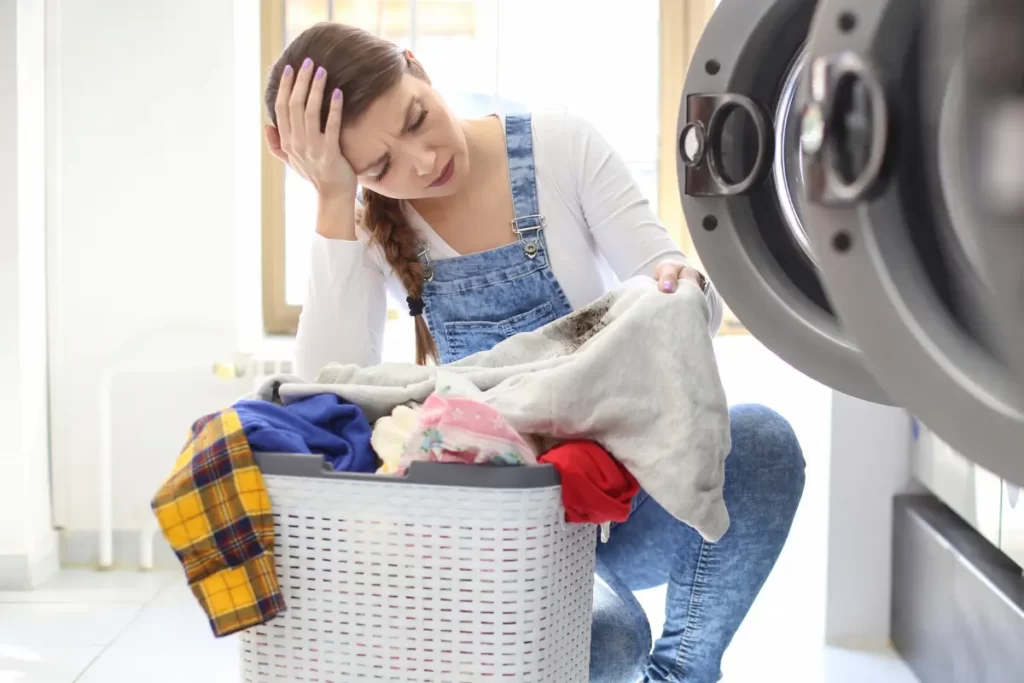
Before you start cleaning a stain, it’s important to play detective and figure out what kind of stain you’re dealing with. It’s like solving a mystery; the clues are in the stain itself.
Color and Texture: Look at the color and feel the texture. Is it greasy, or does it have a color like red or green?
Smell Test: Sometimes, carefully smelling the stain can give you clues. Food stains might have a distinct odor.
Think About Recent Activities: Remember what you did when you got the stain. Were you eating, working with art supplies, or playing outside?
Research: If you’re still unsure, a quick search online can help. Just describe the stain and see what suggestions come up.
Knowing what type of stain you’re dealing with helps you choose the best method to clean it. Like a detective, your keen observation skills are essential in stain removal.
Preparing the Garment for Cleaning
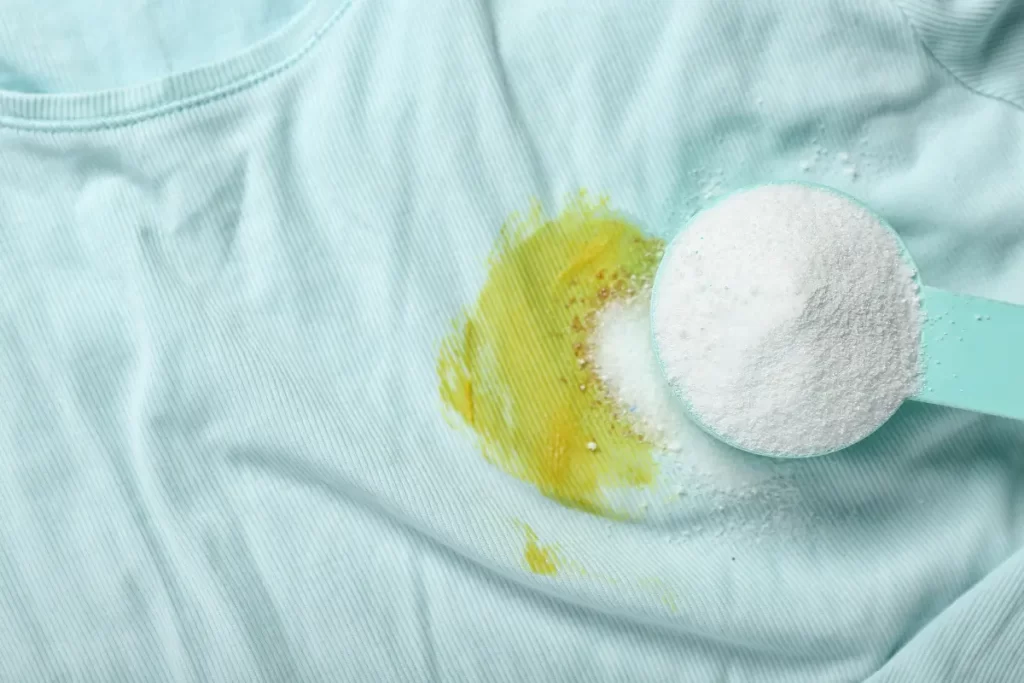
Getting a garment ready for cleaning is an important step in stain removal. It’s like preparing for a mini battle against the stain.
Lay It Flat: Find a clean, flat surface and lay the garment out. This gives you a good view and access to the stain.
Remove Excess Stain Material: If there’s anything solid on the stain, gently scrape it off with a spoon or blunt knife.
Blot, Don’t Rub: If the stain is wet, gently blot it with a clean cloth to absorb as much as possible.
Inspect the Fabric: Check for special textures or colors that need careful handling.
Read the Care Label: This is like reading the instructions before playing a game. It tells you what you can and can’t do with the fabric.
Prepare Your Cleaning Materials: Gather what you need – stain remover, clean clothes, and water.
By preparing the garment properly, you’re ensuring you tackle the stain in the best way possible, keeping the fabric safe and increasing your chances of getting that stain out.
Home Remedies for Removing Cockroach Stains
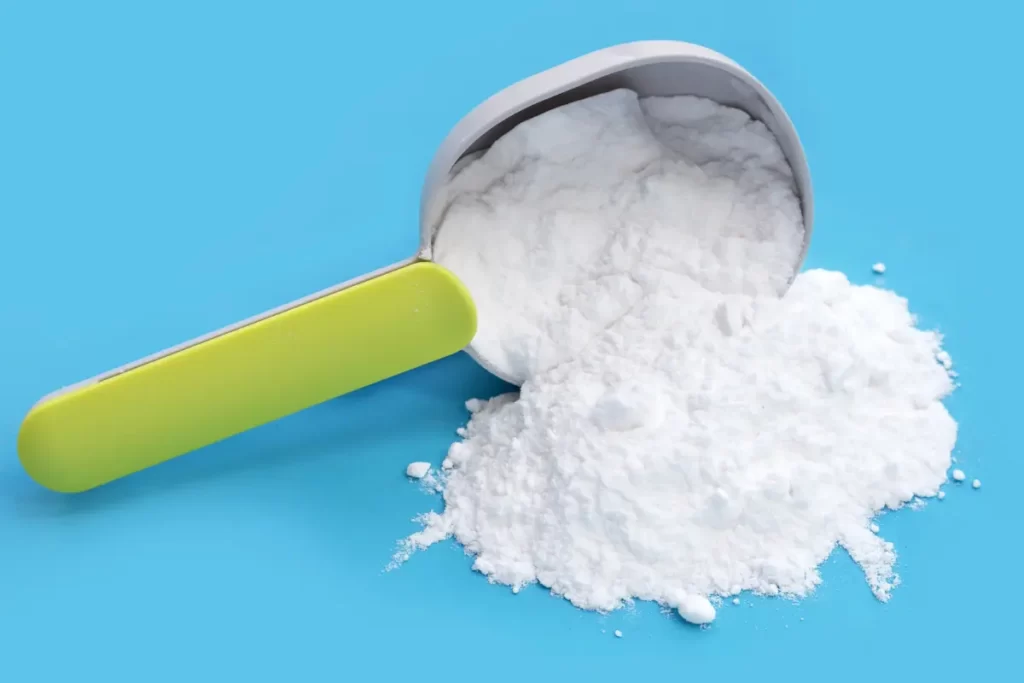
Dealing with cockroach stains can be a real drag, but guess what? You don’t always need fancy cleaners to get rid of them. Some pretty cool home remedies can do the trick.
- Baking Soda and Water: Baking soda is like a magic powder that can help lift stains. Mix it with a little water to make a paste. Apply this paste to the stain and let it sit for about 30 minutes. Then, gently scrub it off with a soft brush or cloth. Rinse the area with water and let it dry. This method is great because baking soda is gentle and won’t harm most fabrics.
- White Vinegar Solution: Vinegar is another superhero in the world of cleaning. Mix equal parts of white vinegar and water. Apply this solution to the stain and let it soak for a few minutes. Then, dab it with a clean cloth to lift the stain. Vinegar is awesome because it can break down the oils in the stain and make it easier to clean.
- Lemon Juice: Lemon juice is not just for lemonade; it’s also a natural stain remover. Squeeze some lemon juice on the stain and sprinkle some salt over it. Let it sit for about an hour. The lemon juice breaks down the stain, while the salt acts as a gentle abrasive. After an hour, rinse it off with water. This method is perfect for lighter fabrics and gives them a fresh, citrusy smell.
- Dish Soap and Water: Dish soap is a champion at fighting grease and can also be great for removing cockroach stains. Mix a little dish soap with water and apply it to the stain. Gently rub it in with a soft cloth or sponge. Let it sit for a few minutes to break down the oils in the stain. Then rinse with water and pat dry. Dish soap is gentle on most fabrics and great for those oily, stubborn stains.
- Rubbing Alcohol: This is a strong one, so use it carefully. Dab a bit of rubbing alcohol on a cotton ball or cloth. Gently apply it to the stain, but don’t rub too hard. Let it sit for a few minutes. The alcohol helps dissolve the oily part of the stain. Afterward, rinse the area with water. Remember to test it on a small, hidden fabric part first, as alcohol can be harsh on some materials.
- Cornstarch: This kitchen staple can help absorb oily stains. Sprinkle a generous amount of cornstarch on the stain and let it sit for an hour or so. The cornstarch will absorb some of the oil and dirt from the stain. Then, brush it off and rinse the area with water. It’s a gentle method and works well on fabrics that can’t handle harsh treatments.
- Hydrogen Peroxide: This mild bleach can work wonders on tough stains. Mix one part hydrogen peroxide with two parts water. Apply this solution directly to the stain using a cloth. Let it sit for about 10 minutes, but keep an eye on it, especially if the fabric is colored, as hydrogen peroxide can lighten it. After 10 minutes, rinse the area thoroughly with cold water. This method is great for more stubborn stains, but remember to do a patch test first to ensure it won’t damage the fabric.
- Salt and Water Paste: Salt isn’t just for seasoning your fries; it can also help remove stains. Make a paste using salt and a bit of water, then apply it to the stain. Let it sit for an hour. Salt can help draw out the stain from the fabric. Afterward, brush off the salt and rinse the area with cold water. This method is gentle and works well on delicate fabrics.
- Club Soda: The fizz in club soda can help lift fabric stains. Pour a little club soda directly on the stain and let it fizz for a few minutes. Then, gently blot the area with a clean cloth. The soda’s bubbling action helps break up the stain, making it easier to remove. Rinse with cold water afterward. This is a gentle, safe option for most fabrics and is especially good for fresh stains.
These home remedies are not just easy to use but also budget-friendly. They use common household items to fight off those nasty cockroach stains. So, next time you spot a stain, remember these handy tips and tackle it like a pro.
Commercial Stain Removal Products
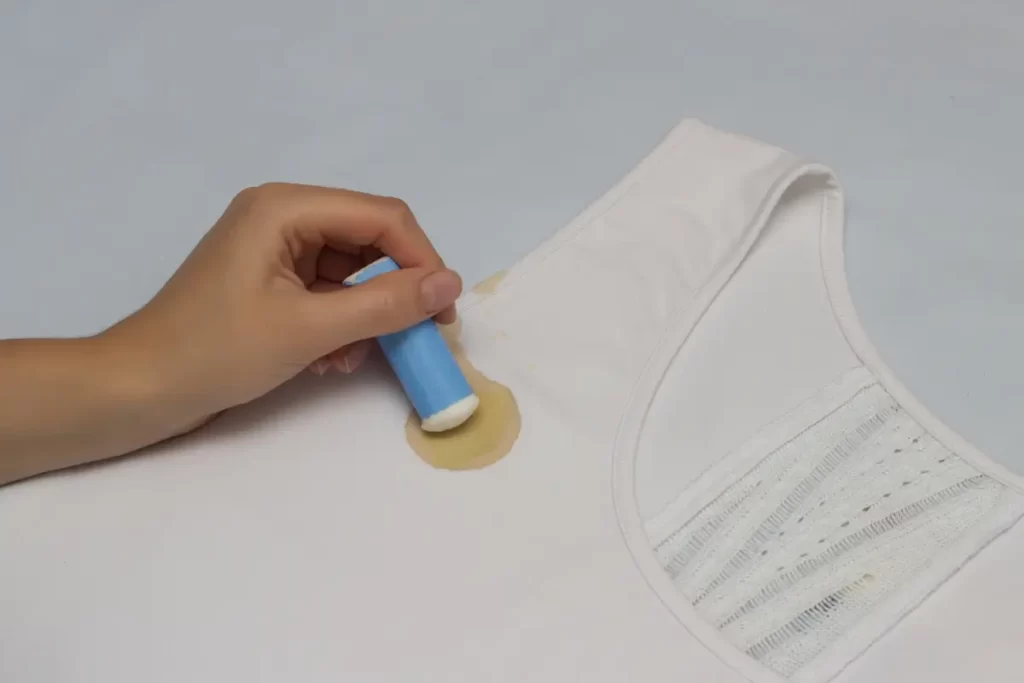
When home remedies don’t cut it for those tough cockroach stains, it’s time to look at commercial stain removal products. There’s a whole world of these products out there, and they’re specially designed to tackle different types of stains. From sprays to gels, these products have powerful ingredients that can break down and lift stains off your clothes.
When picking a commercial stain remover, it’s important to read the labels. Some are made for specific types of stains, like grease or food, while others are more general. Look for products that mention they’re effective on the type of stain you’re dealing with. Also, check if they’re safe for the fabric you’re treating.
Commercial stain removers usually involve applying the product directly to the stain, letting it sit for a set amount of time, and then washing the garment as usual. It’s pretty simple and can be a lifesaver when dealing with stubborn stains. Just remember, always follow the instructions on the product to get the best results and to keep your clothes in tip-top shape.
Choosing the Right Detergent
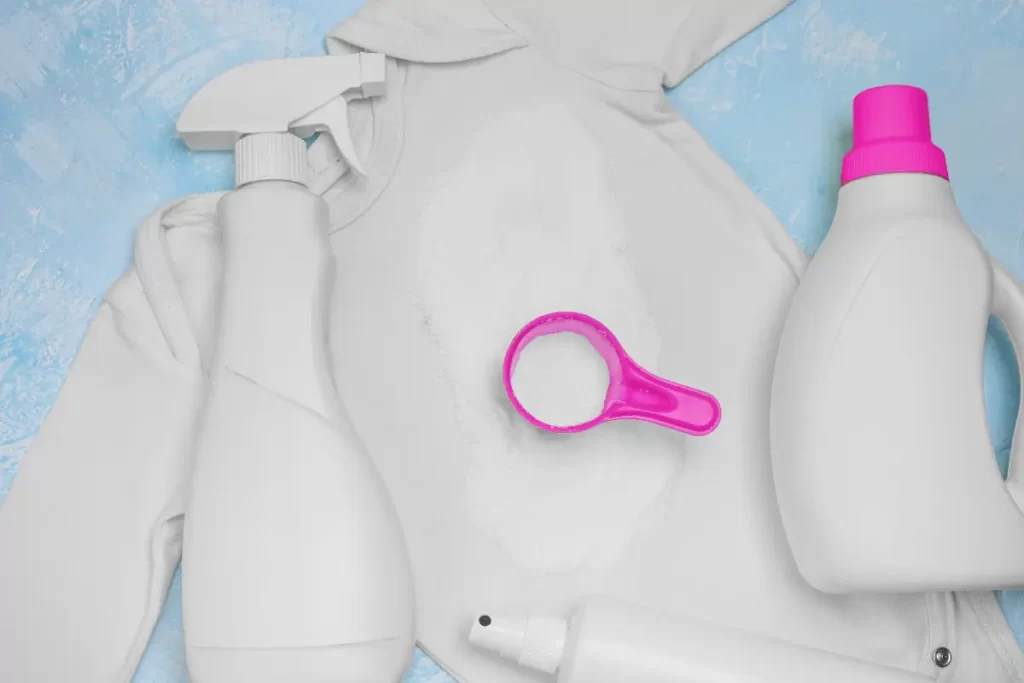
Picking the right laundry detergent is like choosing the best tool for a job. You want something that’s going to get the work done well. For removing cockroach stains, you’ll want a detergent that’s strong on stains but gentle on clothes.
Some detergents are labeled as ‘stain-fighting’ or ‘for tough stains.’ These are a good bet for getting rid of pesky cockroach marks. If you’re dealing with colored fabrics, make sure to choose a color-safe detergent. This means it’ll clean your clothes without fading the colors.
Also, consider if you need a special type of detergent, like one for sensitive skin or an eco-friendly option. There are plenty of choices out there, so you can find one that suits your needs and helps keep your clothes clean and fresh.
Remember, the right detergent can make a big difference in getting your clothes clean. So, take a minute to pick the one that’s right for your stain-busting mission.
Specialized Stain Removers for Persistent Marks
Sometimes, you meet a stain that just won’t budge. That’s when specialized stain removers come into play. These are like the superheroes of the stain removal world. They’re designed to tackle the toughest, most stubborn stains – the ones that laugh in the face of regular cleaners.
You can find specialized stain removers for different types of stains, like grease, ink, or even blood. For cockroach stains, look for a product that’s strong on oily or protein-based stains. These removers often come in different forms, like pens, sprays, or sticks, making them super convenient to use.
Using these products usually involves applying them directly to the stain, letting them sit for a while to do their magic, and then washing the garment. They can be more powerful than regular detergents, so they’re a great option when you’re dealing with a really stubborn mark.
Just be sure to read the instructions carefully and do a patch test first, especially on delicate or colored fabrics. With the right specialized stain remover, even the most stubborn cockroach stains don’t stand a chance.
Step-by-Step Guide to Removing Stains
Stains can be annoying, but with the right steps, you can say goodbye to them. Here’s a simple guide to tackle those pesky marks:
Identify the Stain: Figure out what caused the stain. Is it from food, ink, or maybe a cockroach?
Choose Your Cleaner: Depending on the stain, pick a suitable cleaner. This could be a commercial stain remover, dish soap, or a homemade solution.
Test the Cleaner: Before going all in, try the cleaner on a small, hidden part of the fabric to ensure it doesn’t cause any damage.
Apply the Cleaner: Gently apply your chosen cleaner directly to the stain. If it’s a commercial product, follow the instructions on the label.
Let It Sit: Give the cleaner some time to work. This could be anywhere from a few minutes to an hour, depending on the stain and cleaner.
Rinse and Wash: Rinse the stained area with cold water, then wash the garment as you normally would.
Check Before Drying: Make sure the stain is gone before you dry the garment. Heat from the dryer can set the stain, making it harder to remove later.
With these steps, you’re well on your way to defeating those stubborn stains.
Gentle Scrubbing Techniques
When you’ve got a stain, sometimes gentle scrubbing is all you need. Here’s how to do it without ruining your clothes:
Use a Soft Brush or Cloth: Pick something gentle, like a soft-bristled brush or a clean cloth.
Dip in Cleaner: Get your brush or cloth slightly wet with your chosen cleaning solution.
Scrub Gently: Lightly brush or dab at the stain. Don’t rub too hard, as this can damage the fabric or spread the stain.
Scrub from the Outside In: This helps prevent the stain from spreading outwards.
Rinse Regularly: Rinse the brush or cloth often to avoid reapplying the stain.
Final Rinse: Once the stain seems to be gone, rinse the entire area with cold water.
This method is great for most fabrics and can be really effective, especially if you catch the stain early.
Soaking and Blotting Methods
For some stains, soaking and blotting can be a real game-changer. Here’s what to do:
Prepare Your Solution: Fill a basin or sink with cold water and add your cleaner. This could be a stain remover, laundry detergent, or a homemade solution.
Soak the Garment: Submerge the stained part of the garment in the solution. Let it sit for a while – this could be anywhere from 30 minutes to a couple of hours, depending on the stain.
Check the Stain: After soaking, see if the stain has lightened or loosened.
Blot the Stain: Gently dab the stain with a clean, dry cloth. This helps lift the stain out of the fabric.
Rinse and Repeat: If the stain is still there, rinse the garment and maybe soak it a bit longer.
Wash as Usual: Once the stain is out, wash the garment as you normally would.
Soaking and blotting are especially good for tough or set-in stains. Just be patient – sometimes it takes a little time to see results.
Washing and Rinsing Techniques For Removing Stains
When you’ve got a stubborn stain, how you wash and rinse your clothes can make a big difference. Here’s the scoop on doing it right:
Pre-Treat the Stain: Before tossing your clothes into the washing machine, apply a stain remover or a bit of laundry detergent directly on the stain. Let it sit for a bit to break down the stain.
Turn Clothes Inside Out: This helps protect the colors and fabric surface during the wash.
Use the Right Amount of Detergent: Follow the instructions on your detergent bottle. Too much can leave residue, and too little might not clean effectively.
Choose the Right Wash Cycle: Use a gentle cycle for delicate fabrics and a regular cycle for sturdy ones.
Rinse Thoroughly: Make sure all the soap is rinsed out. Sometimes, a second rinse is needed, especially for heavily soiled clothes.
Check Before Drying: Make sure the stain is completely gone before you put the clothes in the dryer. Heat can set stains, making them harder to remove later.
Remember, the key is to be gentle but thorough. With these tips, you’re all set to tackle those stains.
Effective Use of the Washing Machine
Using your washing machine effectively can be a real game-changer when it comes to removing stains. Here’s how to make the most of it:
Sort Your Laundry: Keep colors separate from whites. This helps prevent colors from bleeding onto each other.
Select the Right Water Temperature: Use warm water for whites and very dirty clothes. Cold water is better for colors and delicate items.
Choose the Correct Cycle: Use a gentle cycle for delicate fabrics and a stronger cycle for heavy fabrics like jeans.
Use Enough Detergent: Follow the guidelines on the detergent bottle. Too much can leave residue, and too little won’t clean effectively.
Don’t Overload: Overloading can prevent clothes from getting properly cleaned and rinsed.
Use Stain Remover for Tough Stains: Apply it directly to the stain before washing.
By following these tips, you can make your washing machine your ally in the fight against stains.
Cold vs. Warm Water Washing
When it comes to washing clothes, the temperature of the water can make a big difference, especially with stains. Let’s break down when to use cold water versus warm water:
- Cold Water: Great for washing dark and bright colors. It helps prevent colors from fading and bleeding. Cold water is also better for delicate fabrics and is more energy-efficient.
- Warm Water: Ideal for whites, heavily soiled clothes, and sturdy fabrics like towels and jeans. Warm water helps to remove dirt and odors more effectively.
- Pro Tip: Always check the care label on your clothes for the recommended water temperature.
So, when you’re tackling a load of laundry, think about what you’re washing and choose your water temperature accordingly. It’s a simple step that can help keep your clothes looking their best.
Preventing Future Cockroach Stains
Let’s face it: cockroach stains are a total bummer. But good news. There are ways to stop these creepy crawlers from leaving their marks again. Here’s what you can do:
Keep Your Space Clean: Roaches love crumbs and spills. Make sure to clean up food messes right away, and don’t forget to sweep and vacuum regularly. A clean home is way less inviting to these bugs.
Seal Up Cracks: These pests sneak in through tiny cracks and holes. Check around windows, doors, and walls. If you find any gaps, seal them up. It’s like putting up a “No Entry” sign for roaches.
Regular Pest Control: Sometimes, you need to bring in the big guns. Using pest control sprays or baits can help keep the roach population down. Just be sure to use them safely, especially around food and pets.
Don’t Leave Food Out: Store food in airtight containers. Roaches are always on the hunt for a snack, and open food is like a free buffet for them.
By following these steps, you can make your home a no-go zone for roaches. And no roaches mean no roach stains.
Protective Measures for Clothes
Roach stains on clothes? No, thank you. To keep your wardrobe safe from these unwelcome visitors, try these tips:
Keep Closets Clean: Regularly vacuum and dust your closet. Roaches can hide in clutter, so keeping this space tidy is key.
Use Garment Bags: For extra protection, store your special or seldom-worn clothes in garment bags. This helps keep the roaches out.
Don’t Eat in Your Bedroom: Eating in your room can leave crumbs and spills, which attract roaches. Try to keep the snacking to the kitchen.
Use Cedar Blocks or Mothballs: These can help keep bugs away. Just be careful with mothballs, as they can be toxic. Cedar blocks are a safer alternative.
Check Secondhand Clothes: If you love thrift shopping, make sure to wash your finds before adding them to your closet. Sometimes, roaches can hitch a ride on used clothes.
By taking these precautions, you can help ensure your clothes stay clean and free of any unwanted roach stains. Plus, it’s always nice to have a clean, organized closet.
Conclusion
Wrapping up dealing with cockroach stains can be a bit of a challenge, but it’s definitely not impossible. Remember, the key is to act fast when you spot a stain and keep your home clean to prevent these pesky bugs from visiting.
Using simple cleaning methods and the right techniques can make a huge difference. And hey, keeping your space tidy not only wards off roaches but also makes for a nice, cozy home. So, grab your cleaning gear, and you’ll be ready to tackle any stains those roaches dare to leave.
FAQs
Ibrahim, Noor Azlina, Nur Amirah Syahirah Ibrahim, Syed Muhammad Al-Amsyar, Normazzaliana Ibrahim, Ainihayati Abdul Rahim, and Rosmawani Mohammad. “The effect of detergent ingredients on stability of thermostable alkaline protease 50a in formulation of liquid stain remover.” In AIP Conference Proceedings, vol. 2454, no. 1. AIP Publishing, 2022.





